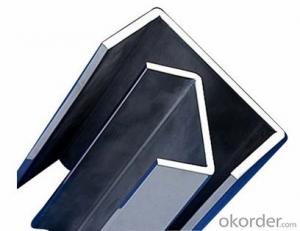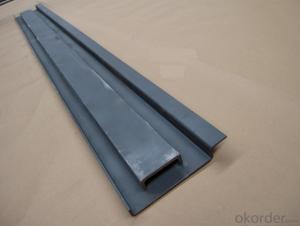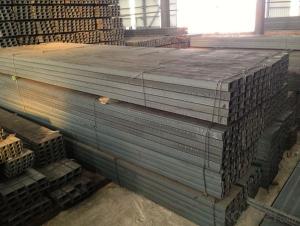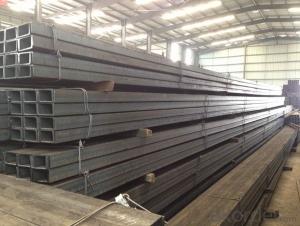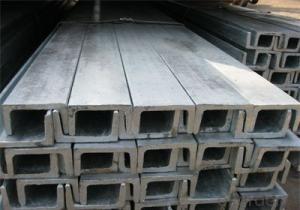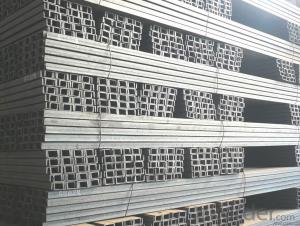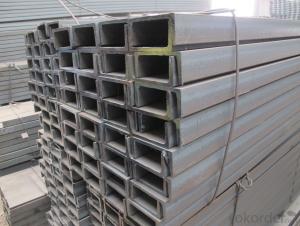Steel U Channel For Special Container Use
- Loading Port:
- China main port
- Payment Terms:
- TT or LC
- Min Order Qty:
- 50 m.t.
- Supply Capability:
- 50000 m.t./month
OKorder Service Pledge
OKorder Financial Service
You Might Also Like
Description
In the production of steel products, steel is molded and reshaped with different machinery at different temperatures. One process is steel rolling, which involves metal stock passing through a pair of rolls. Rolling produces flat steel sheets of a specific thickness, and the process is classified according to the temperature at which the metal is rolled. If the temperature of the metal is above its recrystallization temperature, or the temperature at which the grain structure of the metal can be altered, then the process is termed as hot rolling. If the temperature of the metal is below its recrystallization temperature, the process is termed as cold rolling.
Like cold rolling, cold drawing is performed at room temperature, but instead of producing a flat object like a coke can, cold drawing makes steel into the form of a wire like the spokes of a wheel or a paper clip. To start the process, Steel is usual hammered and rolled so that it can be fit through a die; a tool that turns the steel mass into a wire. The room temperature steel is pulled through the die which reshapes it into a thinner shape while maintaining the same volume. It is similar to the idea of syrup flowing out of a bottle through a tube in that it changes shape but not volume, but instead of squeezing the metal, it is pulled out. In order to get the wire down to the right diameter, it usually requires more than one pass through different dies.
Chemical Compostion
Grade | Element(%) | |||
C | Mn | P | S | |
SS330 | -- | -- | ≦0.050 | ≦0.050 |
SS400 | ||||
SS490 | ||||
SS540 | ≦0.30 | ≦1.60 | ≦0.040 | ≦0.040 |
Usage/Applications
Channel Steel is usually used for building structure, vehicle manufacturing and other industrial structure and often used with i beam.
In details, the channel steel belongs to carbon structural steel which is applied to in the field of construction and machinery. The channel steel is usually used for arch-itechtural structure, and they could be welded in order to support or hang a vari-ety of facilities. They are also usually used in combination with I beam. Generally,the channel steel must possess perfect welding property, riveting property and mechanical property and so on.
FAQ:
Q1: How soon can we receive the product after purchase?
A1: Within three days of placing an order, we will begin production. The specific shipping date is dependent upon international and government factors, but is typically 7 to 10 workdays.
Q2: What makes stainless steel stainless?
A2: Stainless steel must contain at least 10.5 % chromium. It is this element that reacts with the oxygen in the air to form a complex chrome-oxide surface layer that is invisible but strong enough to prevent further oxygen from "staining" (rusting) the surface. Higher levels of chromium and the addition of other alloying elements such as nickel and molybdenum enhance this surface layer and improve the corrosion resistance of the stainless material.
Q3: Can stainless steel rust?
A3: Stainless does not "rust" as you think of regular steel rusting with a red oxide on the surface that flakes off. If you see red rust it is probably due to some iron particles that have contaminated the surface of the stainless steel and it is these iron particles that are rusting. Look at the source of the rusting and see if you can remove it from the surface.
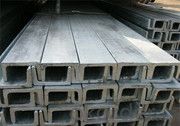
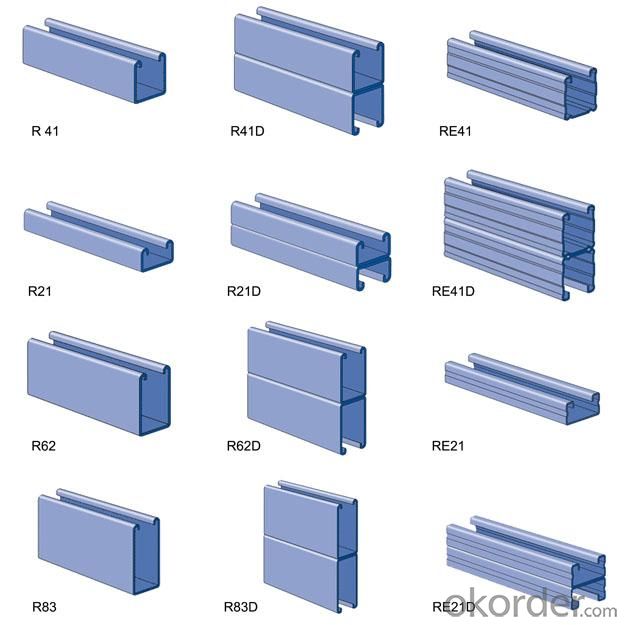
- Q: What are the common material testing procedures for steel channels?
- Common material testing procedures for steel channels include tensile testing, hardness testing, impact testing, and dimensional inspection. Tensile testing involves pulling a sample of the steel channel until it breaks to determine its strength and ductility. Hardness testing measures the resistance of the steel to indentation or scratching, providing an indication of its overall toughness. Impact testing assesses the steel's ability to withstand sudden, high-force impacts. Dimensional inspection ensures that the steel channels meet the required size and shape specifications.
- Q: Can steel channels be used in conjunction with other building materials?
- Yes, steel channels can be used in conjunction with other building materials. Steel channels are versatile structural components commonly used in construction projects. They can be combined with various materials such as concrete, wood, glass, or other metals to create sturdy and customized building designs. The flexibility of steel channels allows them to be integrated seamlessly with other materials, enhancing the structural strength and overall performance of a building.
- Q: Can steel channels be used in the construction of architectural canopies?
- Indeed, architectural canopies can certainly incorporate steel channels into their construction. The utilization of steel channels in construction is widespread owing to their robustness and resilience. These channels offer essential structural reinforcement and stability, rendering them highly suitable for architectural canopies that must endure diverse weather conditions and burdens. Furthermore, steel channels can be skillfully fashioned and molded into various shapes to comply with the canopy's design prerequisites. Depending on the precise design and structural specifications, they can serve as either the primary framework component or as secondary supporting elements. All in all, due to their strength, adaptability, and capacity to enhance the structure's aesthetics, steel channels are widely favored for architectural canopy construction.
- Q: What are the different applications of steel channels in the automotive industry?
- Steel channels are widely used in the automotive industry for various applications. They are commonly utilized in the construction of vehicle frames, where they provide structural support and help enhance the rigidity and strength of the frame. Steel channels also find use in the manufacturing of suspension systems, providing stability and durability. Additionally, they are used in the production of vehicle doors and body panels, offering reinforcement and protection. Overall, steel channels play a vital role in ensuring the safety and performance of automobiles.
- Q: Can steel channels be used for architectural purposes?
- Yes, steel channels can be used for architectural purposes. Steel channels are versatile and can be utilized in many architectural applications such as the construction of building frames, support structures, and architectural facades. They provide strength and stability to the overall structure, making them ideal for architectural projects where durability and load-bearing capacity are important considerations. Steel channels also offer flexibility in design as they can be easily fabricated and customized to meet specific architectural requirements. Moreover, their sleek and modern appearance can enhance the aesthetic appeal of a building, making them a popular choice among architects and designers. Overall, steel channels are a reliable and practical option for architectural purposes.
- Q: Can steel channels be used in railway infrastructure?
- Yes, steel channels can be used in railway infrastructure. Steel channels are commonly used in the construction of railway bridges, tracks, and support structures due to their strength, durability, and ability to withstand heavy loads. They provide structural support and stability, making them ideal for use in railway infrastructure projects.
- Q: Do steel channels require any special maintenance?
- Steel channels do not require any special maintenance. However, regular maintenance is necessary to ensure their longevity and performance. This maintenance typically includes cleaning and inspecting the channels for any signs of damage or corrosion. If any issues are identified, they should be promptly addressed to prevent further deterioration. Additionally, lubricating the channels regularly can help reduce friction and wear, ensuring smooth operation. By following these maintenance practices, steel channels can remain in optimal condition and provide reliable support and structural integrity.
- Q: Can steel channels be used in wastewater treatment plants?
- Indeed, wastewater treatment plants can utilize steel channels. Steel, being an enduring and corrosion-resistant substance, proves itself as a fitting choice for deployment in settings characterized by elevated moisture levels and chemical exposure. Steel channels have diverse applications within wastewater treatment plants. They serve the purposes of conveying and guiding the movement of water and wastewater, while also providing support and stability to equipment and infrastructure. Moreover, steel channels offer the flexibility of effortless fabrication and customization, enabling their alignment with precise design specifications. Furthermore, they exhibit the capacity to endure substantial loads and endure the challenging operating conditions frequently encountered in wastewater treatment plants.
- Q: Can steel channels be customized to specific dimensions?
- Certainly, specific dimensions can be achieved when customizing steel channels. Steel channels possess versatility, allowing them to be tailored to meet specific width, height, and thickness requirements. This customization is accomplished through a range of manufacturing techniques such as cutting, bending, and welding. By modifying these dimensions, steel channels can be perfectly suited to fit particular applications and structural necessities. Whether it be for construction, machinery, or any other industry, steel channels offer the flexibility to meet desired dimensions and specifications when customized.
- Q: Can steel channels be used for creating curved or angled sections?
- Yes, steel channels can be used for creating curved or angled sections. Steel channels are versatile structural components that can be manipulated to form various shapes and angles. They can be bent or curved using specialized machinery or techniques such as cold bending or rolling. By heating the steel channel to a specific temperature, it can be easily curved or bent to the desired angle. Additionally, steel channels can also be cut at an angle to create angled sections. These curved or angled sections can be used in a wide range of applications, including architectural designs, construction projects, and industrial equipment.
Send your message to us
Steel U Channel For Special Container Use
- Loading Port:
- China main port
- Payment Terms:
- TT or LC
- Min Order Qty:
- 50 m.t.
- Supply Capability:
- 50000 m.t./month
OKorder Service Pledge
OKorder Financial Service
Similar products
Hot products
Hot Searches
Related keywords
